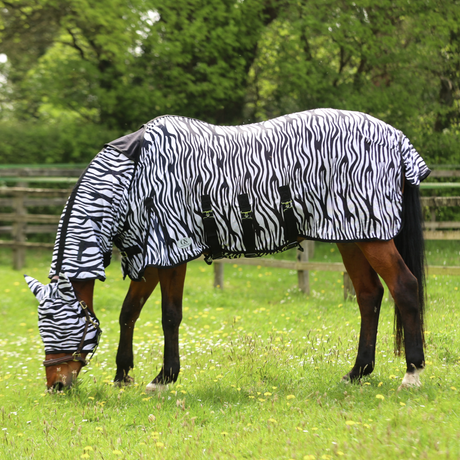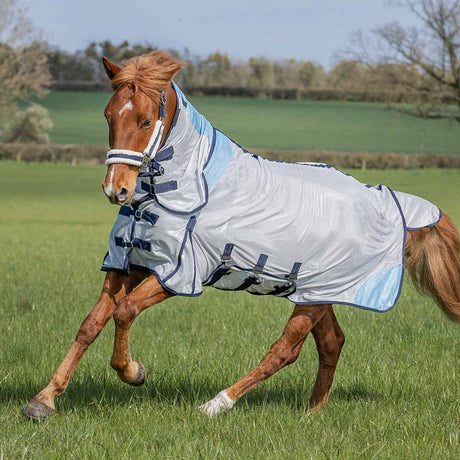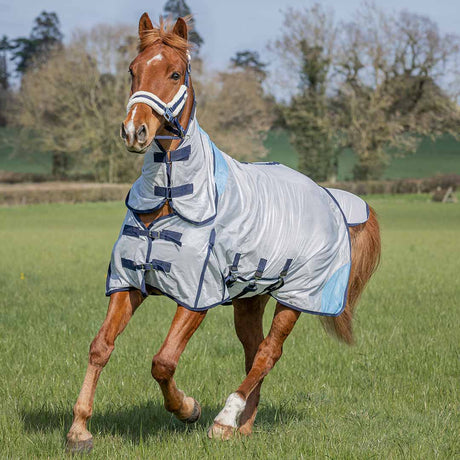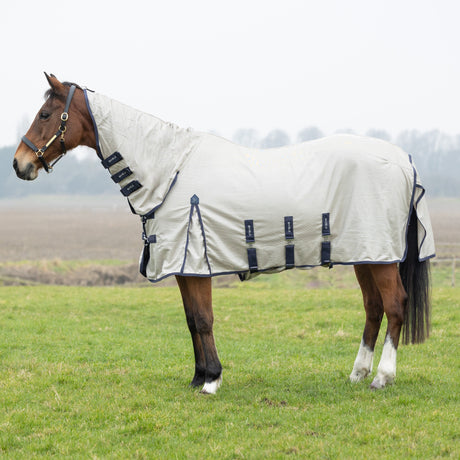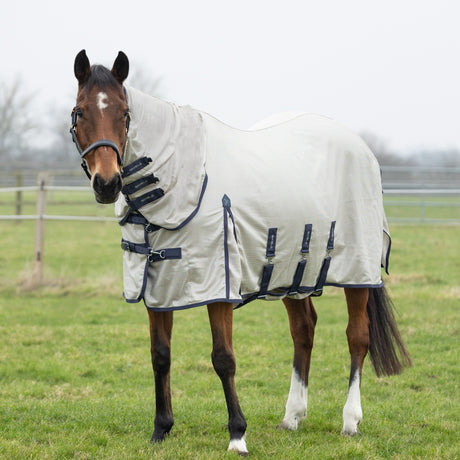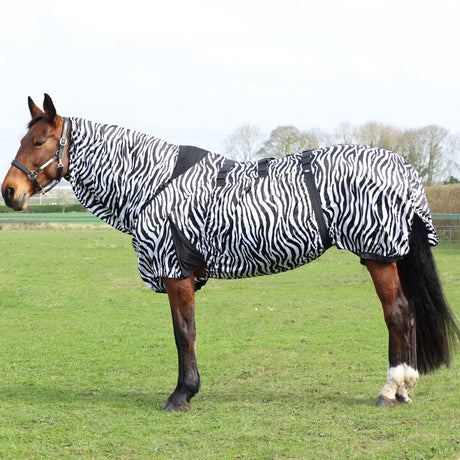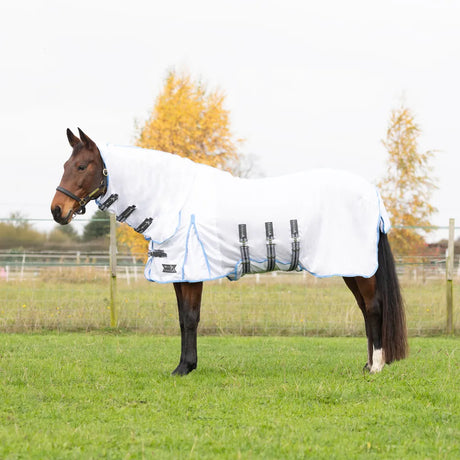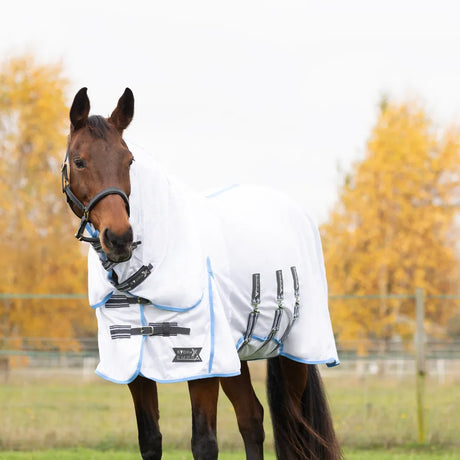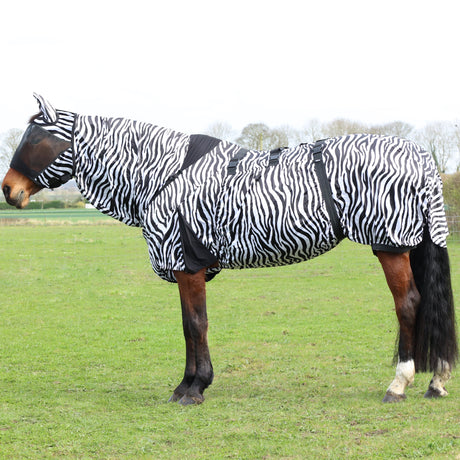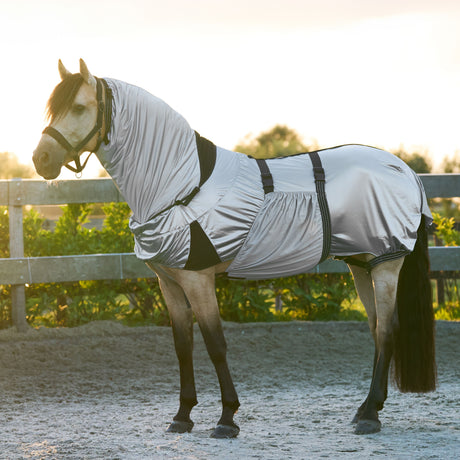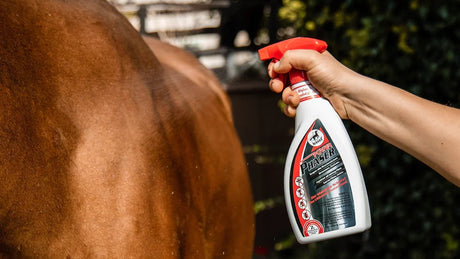What Are Horse Flies... And Why Are They a Problem?
Horse flies (Tabanidae) are sturdy, fast-flying insects with iridescent eyes and chequered wings. Unlike nuisance flies that hover around muck heaps, female horse flies seek a blood meal—using scissor-like jaws to slice the skin, draw blood and leave behind painful welts. Bites can swell, itch and even ulcerate if your horse rubs, and in sensitive individuals may trigger hives or secondary infection.
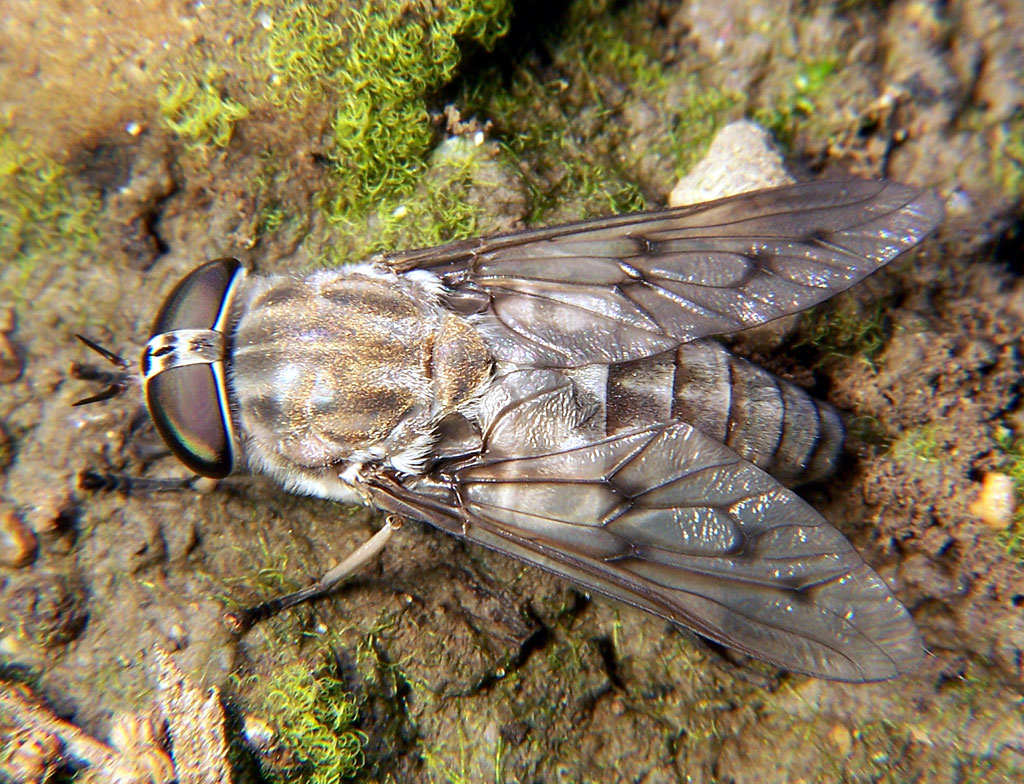
Photo Credit: Bruce Marlin
How To Reduce Horse Flies:
Strategic turnout scheduling is one of the simplest ways to minimise your horse’s exposure to horse flies. By understanding when horse flies are most active and adjusting your horse’s turnout accordingly, you can drastically reduce the number of biting incidents
Stable at peak activity: Horse flies are most aggressive on bright, warm afternoons. Tuck your horse in the stable from midday until late afternoon, then turn out at first light or early evening when the sun is lower and the flies slow down.
Seek cover: Trees, pop-up canopies or even a simple run-in shelter can break the flies’ flight paths. They seldom venture into deep shade.
Eliminating or disrupting horse-fly breeding sites is another key way to reducing the local population before they ever reach your horse. Focus on anything that holds still or slow-moving water, and keep paddocks and yard areas as dry and tidy as possible.
Drain and harrow: Female horse flies lay eggs near damp soil or stagnant pools. Regularly harrow paddocks to break up wet patches and fill in puddles.
Manage muck and moisture: Keep gateways and water trough surrounds well-drained. A tidy yard with minimal standing water cuts breeding sites dramatically.
Physical Defences: Fly Sheets and Masks

Breathable fly sheets: Choose lightweight mesh rugs that cover from wither to tail, with secure straps to prevent rubbing. Look for anti-UV fabrics to protect delicate skin and coat colour.
Mask up: A well-fitted fly mask shields the eyes, ears and poll. Some models include removable nose covers for horses prone to facial bites. Ensure elastic sits flat to avoid pressure points.
Repellents and Traps

Topical sprays and gels: Products containing pyrethroid or permethrin compounds offer hours of protection. For a more natural approach, citronella, neem oil or essential-oil blends can repel flies—though these usually require more frequent reapplication.
Feed-through supplements: These alter your horse’s scent, making them less appealing to biting insects. Check with your vet or nutritionist for suitable brands and dosing.
Yard-wide traps: Hanging or ground-standing fly traps baited with dye-laced attractants lure and capture adult flies before they reach your horse. Position them downwind of turnout areas for best effect.
Spotting and Soothing Bites
Even with perfect prevention, a few bites may still happen. Early care stops irritation escalating:
- Identify a bite: Look for small, hot, raised lumps (often with a tiny puncture mark). If your horse chews or rubs, the area may become raw and scabby.
- Clean gently: Rinse with warm water and a mild, horse-safe antiseptic. Pat dry.
- Calm inflammation: Apply a chilled, damp towel or a gel formulated for insect bites. For severe itching, a vet-prescribed topical corticosteroid can help—but use sparingly.
- Systemic relief: In cases of significant swelling or discomfort, your vet may recommend an antihistamine or low-dose oral corticosteroid. Always follow professional guidance.
- Monitor for complications: If the wound oozes, hardens into an ulcer or your horse shows fever or lethargy, call the vet—secondary infection or allergic reactions can set in quickly.
When Professional Help Is Crucial
Horse-fly bites alone usually heal in a few days to a week. However, seek veterinary advice if your horse:
- Develops deeper ulcers or draining sinus tracts.
- Shows persistent facial swelling or “wind-puff” around the eyes.
- Becomes lame from bites on the legs or fetlocks.
- Exhibits allergic dermatitis (“sweet itch”) flare-ups.






